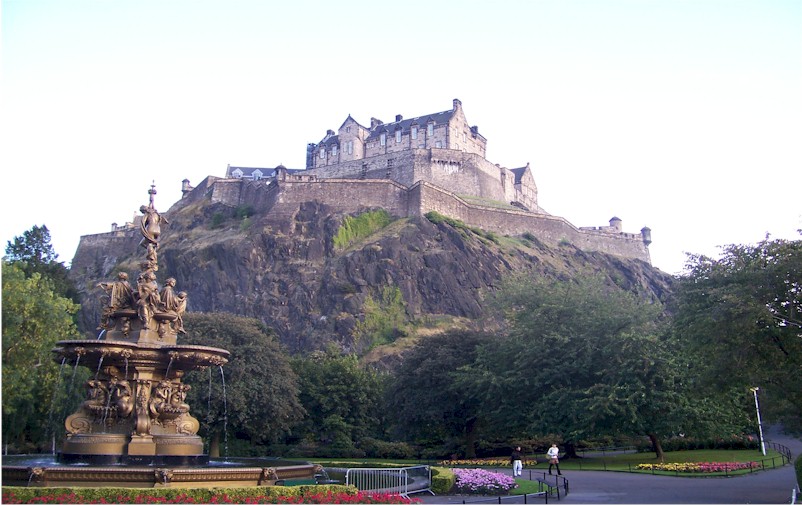Edinburgh Castle historically the principal royal fortress of Scotland, perched on Castle Rock, a massive volcanic rock that towers dramatically over the city of Edinburgh. Overlooking the North Sea, the rock has long occupied a key strategic position on the North Sea inlet called the Firth of Forth. It has consequently been fortified from very early times. Saint Margaret's Chapel, built in the 12th century in memory of Margaret, queen of Malcolm III, is almost certainly the oldest structure on the rock. Because of continuous remodeling and alteration of the fortifications on the rock over the centuries, little remains of the medieval fortifications. The picturesque accumulation of battlements, towers, prisons, and palaces includes elements that date from virtually every stage of Scottish history. The finest buildings date principally from the reign of James IV, during the late 15th and early 16th centuries; the Great Hall, with a superb hammer-beam roof, is perhaps the most significant. James IV was also responsible for improvements made to the 15th-century Royal Palace of James I (King of Scotland 1406-1437), situated on Crown Square, within the Castle, and it was in a room here that James VI of Scotland (who later became James I of England) was born to Mary, queen of Scots in 1566. Today, the castle, which is open to visitors, is the scene of an annual floodlit performance of military drum and bagpipe music, known as the Edinburgh Military Tattoo.
For more information visit Undiscovered Scotland

